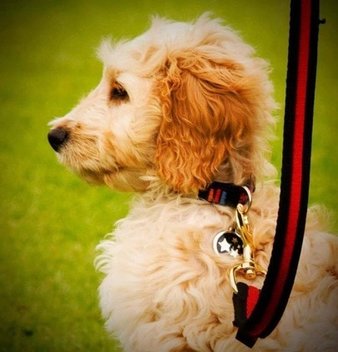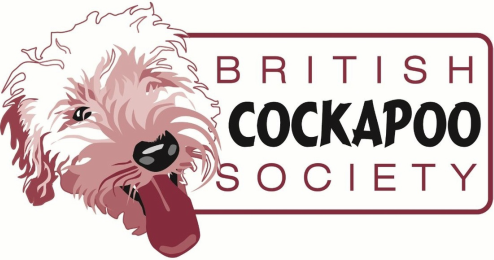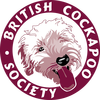TEACHING LOOSE LEAD WALKING

Those of a certain age will remember watching one of the first celebrity dog trainers on the television teaching dogs how to walk on the lead, and encouraging owners to give a firm yank back on the collar (usually a metal choke chain) if the dog dared to go too slow, too fast and so on.
Fortunately, times have changed, and so have thoughts surrounding dog training. For this article we are aiming purely for the dog to walk by its handlers side, not pulling on the lead, nothing more.
So how do you get your dog to walk gently by your side on a lead? When you are starting off make sure you use a puppy collar and lead - they are lightweight and so more comfortable for puppies.
First of all you need to get puppy used to its collar and lead - and this can sometimes take a little time!
Try and make getting the collar and lead associated with something good. Some people start by putting the puppy collar on just for a few minuts at mealtimes or playtime. This helps the pup associate getting the collar on with something nice, and also means that he doesnt have to put up with it for too long. Don't worry if it takes a few days for your pup to get used to the collar, it is a new sensation for it and can take a little bit of time.
Once he/she is used to the collar, introduce the lead, but again be prepared to take it slowly.
While your pup is so young it will probably be willing and happy to follow you everywhere you go, in the house or out so take advantage of this willingness and use it to help the lead training.
Put the lead on your pup and walk around the house with him on it. Give lots and lots of praise and treats as reward as he walks with you.
If he stops, sits down or pulls on the lead, DO NOT PULL HIM. He is just learning so be patient, just call him to you and reward him when he comes. Make it fun and worth doing by giving him love and treats, and keep these training sessions short so that pup doesnt get stressed or fed up with it all You can repeat this several times throughout the day to build up the pups experience.
As he gets used to the lead, broaden where he goes with it on - take him for a walk round the garden, or down your path, wherever you can (depending on your pups vaccination status) but always using positive reward based methods.
TEACHING OLDER DOGS
For older dogs whose lead manners arent quite right, you can still teach him how to walk quietly by your side.
When walking the older pup or dog there are a couple of things you can do to improve his lead skills.
Does your dog have a favourite toy. or is he more food orientated? If a toy then keep that toy to one side and let your dog have it only when you are doing lead training.
Start your training in your home or garden where your dog wont get distracted. Get your dogs toy or a few really high value and tasty treats (like cheese, small pieces of chicken or sausage) and call your dog to your side. Walk around the garden keeping your dog by your side by feeding little pieces of treat or letting it have a little play with the toy every now and again.
Do this several times a day, as much as you can but in short bursts.
Next stage is to take your dog to a quiet area on its lead and practice what you have been doing in your garden or home. Keeping your dog calm will help keep him focussed so get in the habit of asking him to 'sit' before you put the lead on, go out of the door, out of the car etc. This will help keep excitement levels down.
There will be more distractions in the open area so if he starts to pull, sits down or lags behind, as soon as there is a tension on the lead. STOP. Dont look at the dog, talk or interact in any way. Wait for it to come to you again, for the pressure on the lead to lessen, give praise, say a specific word (like GOOD or YES!!) and carry on walking. Repeat this every time it pulls or stops.
Making sure all members of the household that take your dog for a walk are following the same guidelines will help avoid confusing the dog.
Fortunately, times have changed, and so have thoughts surrounding dog training. For this article we are aiming purely for the dog to walk by its handlers side, not pulling on the lead, nothing more.
So how do you get your dog to walk gently by your side on a lead? When you are starting off make sure you use a puppy collar and lead - they are lightweight and so more comfortable for puppies.
First of all you need to get puppy used to its collar and lead - and this can sometimes take a little time!
Try and make getting the collar and lead associated with something good. Some people start by putting the puppy collar on just for a few minuts at mealtimes or playtime. This helps the pup associate getting the collar on with something nice, and also means that he doesnt have to put up with it for too long. Don't worry if it takes a few days for your pup to get used to the collar, it is a new sensation for it and can take a little bit of time.
Once he/she is used to the collar, introduce the lead, but again be prepared to take it slowly.
While your pup is so young it will probably be willing and happy to follow you everywhere you go, in the house or out so take advantage of this willingness and use it to help the lead training.
Put the lead on your pup and walk around the house with him on it. Give lots and lots of praise and treats as reward as he walks with you.
If he stops, sits down or pulls on the lead, DO NOT PULL HIM. He is just learning so be patient, just call him to you and reward him when he comes. Make it fun and worth doing by giving him love and treats, and keep these training sessions short so that pup doesnt get stressed or fed up with it all You can repeat this several times throughout the day to build up the pups experience.
As he gets used to the lead, broaden where he goes with it on - take him for a walk round the garden, or down your path, wherever you can (depending on your pups vaccination status) but always using positive reward based methods.
TEACHING OLDER DOGS
For older dogs whose lead manners arent quite right, you can still teach him how to walk quietly by your side.
When walking the older pup or dog there are a couple of things you can do to improve his lead skills.
Does your dog have a favourite toy. or is he more food orientated? If a toy then keep that toy to one side and let your dog have it only when you are doing lead training.
Start your training in your home or garden where your dog wont get distracted. Get your dogs toy or a few really high value and tasty treats (like cheese, small pieces of chicken or sausage) and call your dog to your side. Walk around the garden keeping your dog by your side by feeding little pieces of treat or letting it have a little play with the toy every now and again.
Do this several times a day, as much as you can but in short bursts.
Next stage is to take your dog to a quiet area on its lead and practice what you have been doing in your garden or home. Keeping your dog calm will help keep him focussed so get in the habit of asking him to 'sit' before you put the lead on, go out of the door, out of the car etc. This will help keep excitement levels down.
There will be more distractions in the open area so if he starts to pull, sits down or lags behind, as soon as there is a tension on the lead. STOP. Dont look at the dog, talk or interact in any way. Wait for it to come to you again, for the pressure on the lead to lessen, give praise, say a specific word (like GOOD or YES!!) and carry on walking. Repeat this every time it pulls or stops.
Making sure all members of the household that take your dog for a walk are following the same guidelines will help avoid confusing the dog.
|
|
|

